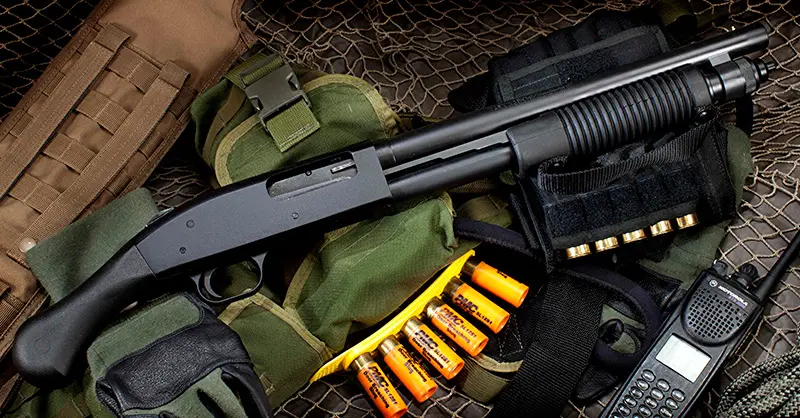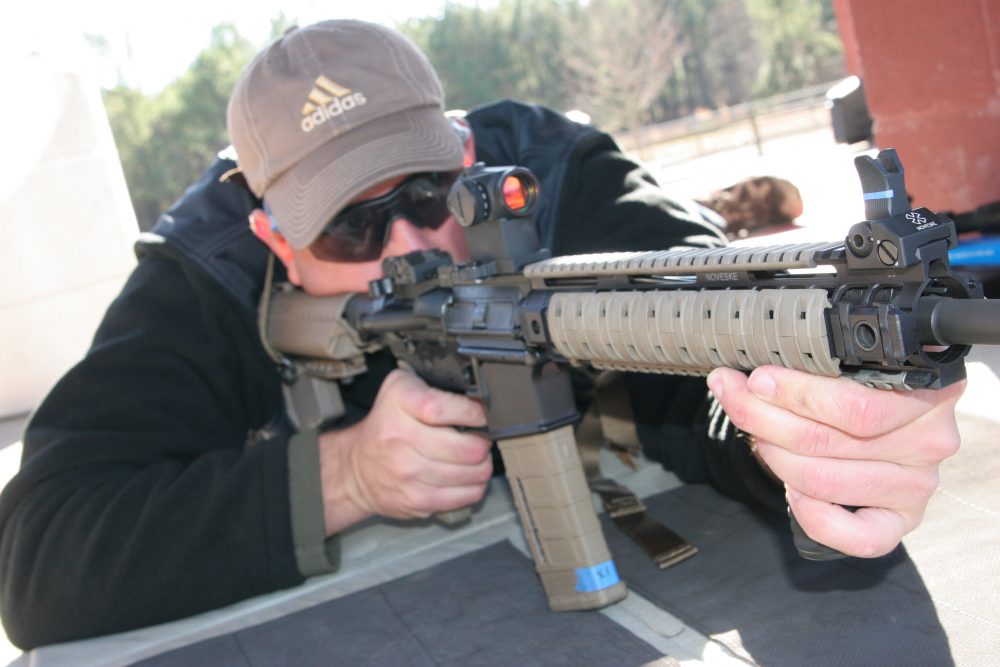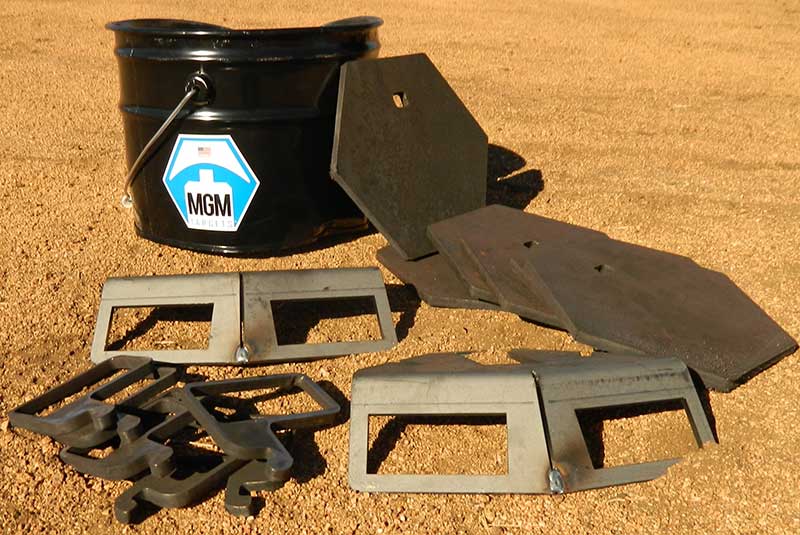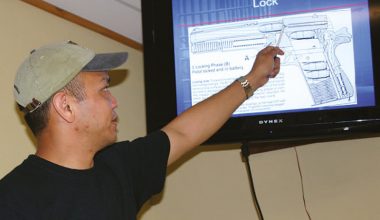If an instructor in an introductory firearms class drops an elephant on your plate and tells you that you have three days to eat it, you’re likely to focus on the elephant and not the eating, which represents the fundamentals. But if the instructor feeds you bite by bite, on Day 3 you’ll be surprised to find that you’ve eaten the entire beast without choking.
Randy Cain of Cumberland Tactics is one instructor who knows how to serve an elephant one bite at a time. I recently went back to the Southern Exposure Training Facility outside of Lakeland, Florida to eat as much of the elephant as I could in three days in Cumberland’s Carbine I course.
This was my second time taking Carbine I, and this time I decided to get back to basics and use a stripped-down carbine with nothing attached except the sling. But this was not about operating in the real world with a less-capable tool. This was about getting back to basics and revisiting the fundamentals with an instructor I knew would appreciate the exercise and also make sure I learned everything I could in the process.
As it turned out, during the lecture portion at the very beginning of Training Day 1 (TD1), Cain said, “I would prefer to see people take their first class with the basic gun.”
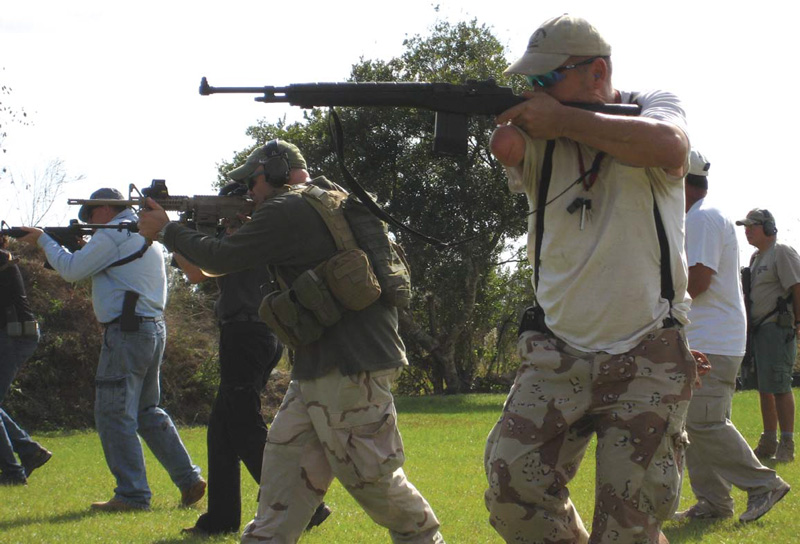
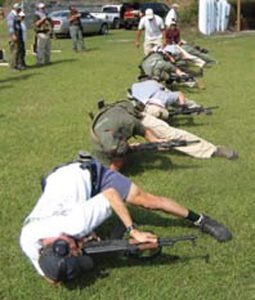
Table of Contents
EQUIPMENT
The carbine I used was a prototype carbine that Paul Buffoni of Bravo Company Manufacturing (BCM) was nice enough to send me for the class. It was configured in what some call a “Dissipator” configuration, made most popular and most commonly known as a model from Bushmaster in the mid to late 1990s. The BCM prototype version improves greatly on the old concept by using a government profile barrel in place of the HBAR, a mid-length gas system in place of the carbine length, and a flattop upper in place of the irons-only A2 upper receiver. The carbine also benefits from the sunset of the federal Assault Weapons Ban and includes a threaded muzzle and collapsible M4 stock. It also came with BCM’s excellent Gunfighter charging handle.
To this I added a Troy fixed rear iron sight and Blue Force Gear (BFG) Vickers Combat Applications Sling, which I attached with a BFG UWL 3.25 wire loop slid over the handguards and pulled tight to the rear. I did allow myself one luxury that I was glad to have, the Magpul MOE pistol grip. Getting back to basics is one thing, but ignoring years of experience and using a grip like the A2 that is just downright painful would be stupid and reduce the ability to learn. I also added a Geissele two-stage SSA trigger, which I thought would give me an advantage at distance. While an excellent product, I found it to be an unnecessary addition given the use of iron sights.
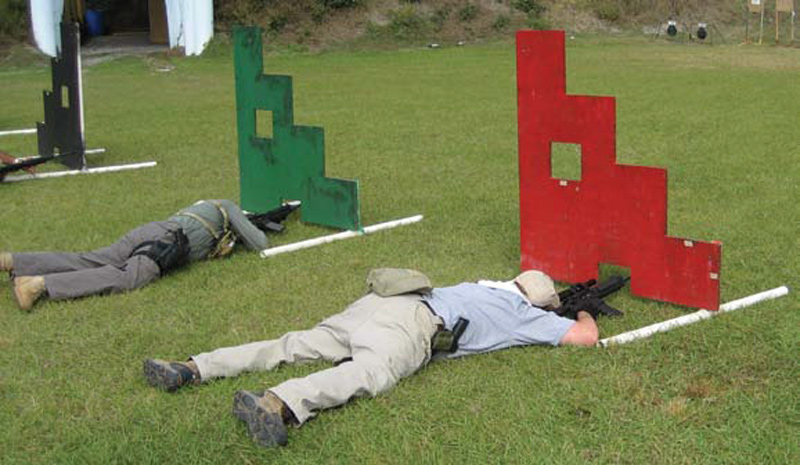
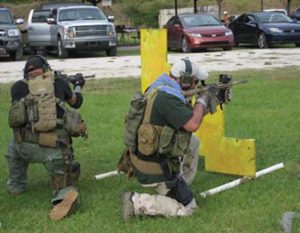
PISTOL OR CARBINE?
Pistol class with a carbine or rifle class with a carbine? It may seem like a stupid question, but it’s becoming an increasingly important distinction. More and more, the run ’n’ gun type of carbine classes are really taking place at handgun distances and focusing on shooting on the move, non-standard response drills, manipulations like emergency reloads and malfunction clearances, and maybe some use of cover or engaging multiple targets. But do they teach you how to shoot?
Just about anyone can make “combataccurate hits” out to three, five, even 10 and 15 yards, especially with a red dot sight. Doing so at speed requires a bit more experience, but certainly not much in the way of marksmanship. Randy teaches a rifle class with a carbine. You will shoot out to 200 yards. You will shoot on steel plates against other shooters at 200 yards. You will shoot those same steel plates at 75 yards in the dark. You will learn the fundamentals needed to get those hits at those distances. Yes, you’ll learn other techniques too, but the emphasis is on the fundamentals and the proper execution thereof. Many pay lip service to the fundamentals, but if their fundamentals don’t translate into you getting hits at 200 yards, they really aren’t fundamentals.
Once properly instructed, any semi-intelligent person can perfect reloads, malfunction clearances, and transitions to the handgun at home with dry fire. Getting hits at 200 yards with iron sights or red dot sights with a 16-inch barreled carbine requires that you get your dick in the dirt and get proper instruction as well as supervision while you work on those basics. Expecting or requiring someone to get those hits is one thing. Giving them the tools to do so and the correction to their mistakes when they try and fail is another thing altogether. Randy can provide the instruction and supervision that are critical parts of the equation.
18 ELEPHANT EATERS
We had 18 shooters in the class. Two of them were Soldiers, one active and one retired Wounded Warrior. Both had driven down from Michigan to Florida to take this class. When guys like that show up for an open enrollment Level 1 class, it is worth noting. At the end of the course, Randy acknowledged how humbled he is that men like them choose to come and train with him.
The majority of the students used some kind of non-magnified red dot scope (predominantly Aimpoints and EOTechs), a few used Trijicon ACOGs, a few lowpower variable optics, and several of us shot with iron sights. Rifles consisted of 15 AR-pattern carbines, one AK, one M14, and one bolt-action. That’s right, a boltaction gun in a carbine class.
This particular student was one of Randy’s frequent repeats who had previously taken the carbine class with the standard semi-auto carbine, and had taken Randy’s Practical Rifle class, which is geared toward the lightweight bolt-action rifle, with a low-power optic on board. It was this type of bolt-action that this student used in the course. He did not once hold up the class, the line, or any drill, and frequently won many rounds of the various shoot-off drills. While he might have had a harder time keeping up in a more CQBoriented course, Randy’s rifle-with-acarbine course methodology lends itself well to a capable shooter being able to keep up even when “handicapped” with a bolt-action.
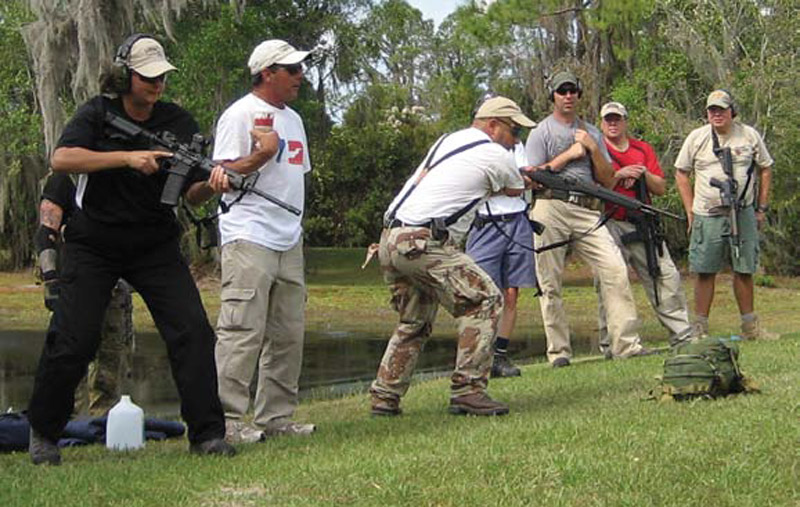
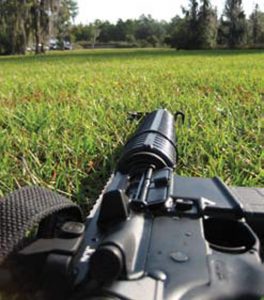
MULTI-TASKING TEACHING
Randy typically teaches two to three things with every block of instruction— the primary lesson and then a whole series of secondary lessons. Take the zeroing process as an example.
On TD1, you begin at 50 yards and shoot for a group with no instruction before going downrange to check the targets. You come back to the line and Randy introduces Military Prone, natural point of aim, and discusses the seven points of contact. You shoot for a group again, then head downrange to check. When you come back, Cain introduces Olympic Prone and the natural respiratory pause before you shoot another group and go check it. When you return, Randy introduces Monopod Prone, dispelling the rumor that the AR-pattern carbine will “jam” if pressure is put on the magazine floorplate, and you shoot again.
In this way, Randy has introduced you to three positions, three concepts of marksmanship, stressed trigger control and sight picture the whole time, made personal comments and adjustments to virtually every shooter on the line, and given you ample opportunity to apply the concepts and lessons he’s conveyed. At this point, virtually every shooter on the line has a good initial zero at 50 yards.
The way Randy teaches speed reloads is also typical of his teaching method. He explains the why of the task at hand, defines the task and then teaches multiple methods of performing it while explaining the pros and cons of each. He gives students the opportunity to try each method for themselves before finally indicating which method he prefers and then allowing students to use the method that works best for them.
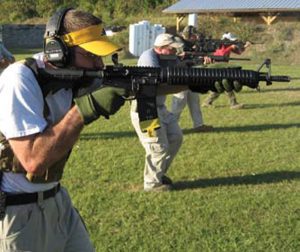
All the while you’re getting more opportunities to work on the fundamentals of sight alignment and trigger control. If students’ groups start to open up, you hear Randy ask, “What’s the purpose of shooting?” to remind students that the purpose is to hit the target.
LOW-LIGHT SESSIONS
Shooting at 50 yards in the dark on a steel plate while Randy swept the light back and forth over the target, switched the light on and off, and moved the light from the sights to the target proved to be a challenge with iron sights. I got in a hurry, trying to get down and get my hit quickly, and missed with my first couple of shots. I then chose to break things down into pieces. I began with the rear sight aperture and found that the large hole was still too big for me to use, even in low light, at 50 yards, so I went back to the small hole.
Then I looked at the front sight and figured out that I may have been trying to use one of the wings of the front sight base rather than the post, which I should have been using. Once I got the front sight post centered in the small aperture and was able to keep a consistent focus on the post, I was able to hit the plate with the first shot.
“If you can shoot well and you’re wearing all that gear [chest rigs, drop leg holsters, etc.], then nobody even notices. But if you’re wearing all that crap and can’t execute the fundamentals, then you just look like a dork.” Randy shared this with me in a conversation off-range, and it really defined my experience in this class getting back to basics with the carbine.
The concept is the same whether you’re talking about gear on a person, gear on a rifle, or complex drills and “advanced” classes. You have to be able to get the hits with the least number of crutches before you move on to other things. Randy Cain of Cumberland Tactics can help you lay that foundation like few others.
